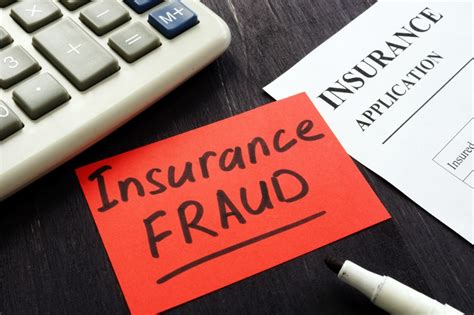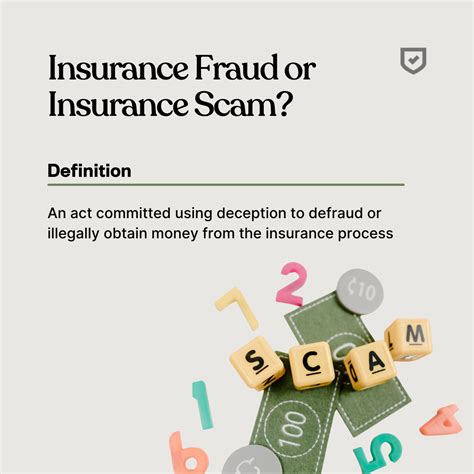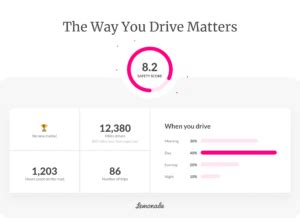Fraudulent Insurance

In the complex landscape of insurance, one of the most significant challenges faced by insurers and policyholders alike is the issue of fraudulent activities. Insurance fraud is a deliberate deception or misrepresentation aimed at obtaining an illegitimate financial benefit from an insurance company. This insidious practice not only undermines the integrity of the insurance industry but also poses a serious threat to the financial stability of both insurers and innocent policyholders. It is an ever-evolving challenge, with fraudsters employing increasingly sophisticated methods to exploit vulnerabilities in insurance systems.
This comprehensive guide aims to delve into the intricate world of fraudulent insurance practices, shedding light on its various forms, the impact it has on the industry, and the measures being taken to combat it. By understanding the nuances of insurance fraud, we can better equip ourselves to identify, prevent, and mitigate its detrimental effects.
The Landscape of Insurance Fraud

Insurance fraud is a pervasive issue that spans across various domains of insurance, including life, health, property, and casualty insurance. The nature and scale of fraud vary significantly, ranging from individual policyholders making minor misrepresentations to organized criminal networks perpetrating complex schemes.
Types of Insurance Fraud
Fraudulent activities in the insurance sector can be broadly categorized into two main types: soft fraud and hard fraud.
- Soft Fraud: This type of fraud involves intentional misrepresentation or concealment of relevant information by policyholders, often to obtain a financial benefit they would not otherwise be entitled to. Soft fraud is typically opportunistic and driven by financial motivation. It can include exaggerated claims, failure to disclose pre-existing conditions, or misrepresentation of circumstances surrounding an incident.
- Hard Fraud: Hard fraud is a more severe and deliberate form of insurance deception. It involves intentional acts of deception, often orchestrated by organized criminal groups, to obtain substantial financial gains. This can include staging accidents, arson, or even faking one's own death to collect life insurance proceeds. Hard fraud is a significant concern for insurers due to its potential for large-scale financial loss and its impact on public safety.
Impact of Fraudulent Activities
The repercussions of insurance fraud are far-reaching and affect various stakeholders in the insurance ecosystem.
- Insurers: Fraudulent activities directly impact insurers' bottom line, leading to increased costs and reduced profitability. This, in turn, can result in higher premiums for all policyholders, including those who have never committed fraud.
- Policyholders: Honest policyholders bear the brunt of insurance fraud through increased premiums. They may also face delays or denials in legitimate claims processing as insurers allocate resources to combat fraud.
- Society: Beyond the financial implications, insurance fraud can have severe societal consequences. For instance, staged car accidents can lead to serious injuries or fatalities, while arson and property fraud can destabilize communities and impact local economies.
Identifying and Combating Fraudulent Activities

Insurers have adopted a multi-pronged approach to tackle the issue of insurance fraud, employing a combination of advanced technologies, data analytics, and regulatory measures.
Advanced Technologies
The insurance industry has embraced technological advancements to enhance its ability to detect and prevent fraudulent activities.
- Artificial Intelligence (AI) and Machine Learning: AI-powered systems can analyze vast amounts of data, identify patterns, and detect anomalies that may indicate fraudulent behavior. These systems can continuously learn and adapt, making them increasingly effective over time.
- Biometric Verification: Biometric technologies, such as fingerprint or facial recognition, are being used to verify the identity of policyholders, reducing the risk of identity theft and fraudulent claims.
- Blockchain Technology: Blockchain offers a secure and transparent way to store and share insurance data, making it difficult for fraudsters to manipulate records. It can also streamline the claims process, reducing the potential for fraud.
Data Analytics and Predictive Modeling
Insurers are leveraging advanced data analytics techniques to identify potential fraud indicators and develop predictive models.
- Predictive Modeling: By analyzing historical data and identifying patterns associated with fraudulent behavior, insurers can develop predictive models to flag suspicious claims or identify high-risk policyholders.
- Behavioral Analytics: This approach focuses on understanding the behavioral patterns of policyholders to identify anomalies that may indicate fraudulent intent. For instance, sudden changes in spending patterns or travel habits could be indicative of staged accidents or other fraudulent activities.
Regulatory Measures and Collaboration
Insurers and regulatory bodies are working together to strengthen the legal framework surrounding insurance fraud and enhance collaboration.
- Fraud Detection Units: Many insurers have established dedicated fraud detection units or departments to investigate suspicious claims, share intelligence, and develop strategies to combat fraud.
- Information Sharing: Insurers are encouraged to share information about suspected fraudsters and fraudulent activities across the industry, helping to identify and prevent repeat offenders.
- Public Awareness Campaigns: Raising public awareness about the consequences of insurance fraud is crucial. Many insurers and industry associations are conducting educational campaigns to deter potential fraudsters and encourage policyholders to report suspicious activities.
Case Studies: Real-World Examples of Fraudulent Insurance
Understanding the practical implications of insurance fraud can provide valuable insights into its various forms and the potential consequences.
Life Insurance Fraud: A Fatal Deception
In a high-profile case, a group of individuals staged the disappearance of a family member, hoping to collect on a substantial life insurance policy. The fraudsters went to great lengths to fabricate evidence, including creating false alibis and manipulating digital records. However, advanced forensic techniques and the perseverance of investigators ultimately led to their downfall, resulting in criminal convictions and significant financial penalties.
Health Insurance Fraud: A Costly Misrepresentation
A healthcare provider was found to be submitting fraudulent claims to multiple insurance companies, billing for services that were never rendered. The provider had developed a complex scheme, involving fake patient records and forged signatures. The fraud was uncovered through a combination of data analytics and whistleblower reports. The provider was subsequently prosecuted and ordered to pay restitution to the affected insurers.
Property Insurance Fraud: A Deliberate Destruction
In a tragic incident, a homeowner deliberately set fire to their own residence, hoping to collect on a property insurance policy. The individual had faced financial difficulties and believed that the insurance payout would provide a solution. However, the investigation revealed several inconsistencies in the homeowner's account, leading to their arrest and conviction. The case served as a stark reminder of the potential consequences of insurance fraud and the importance of vigilant fraud detection.
Future Implications and Emerging Trends
As the insurance industry continues to evolve, so too do the methods employed by fraudsters. Staying ahead of these evolving tactics is crucial for insurers and regulatory bodies.
Emerging Trends in Insurance Fraud
- Cyber-Enabled Fraud: With the increasing digitization of insurance processes, cybercriminals are targeting insurance systems to gain access to sensitive data or manipulate records. This includes phishing attacks, ransomware, and other forms of cybercrime.
- Social Engineering: Fraudsters are leveraging social media and other online platforms to gather personal information about policyholders, which they can then use to commit identity theft or submit fraudulent claims.
- Organized Criminal Networks: Criminal syndicates are becoming increasingly involved in insurance fraud, often targeting high-value policies and employing sophisticated schemes. These networks have the resources and expertise to perpetrate large-scale fraud, making them a significant concern for the industry.
Strategies for the Future
To effectively combat emerging trends in insurance fraud, the industry must continue to adapt and innovate.
- Enhanced Cybersecurity Measures: Insurers must prioritize cybersecurity, investing in robust systems and training employees to recognize and respond to cyber threats. This includes implementing multi-factor authentication, encrypting sensitive data, and regularly updating security protocols.
- Collaboration and Information Sharing: The insurance industry should continue to foster collaboration, both within the industry and with regulatory bodies. By sharing intelligence and best practices, insurers can stay ahead of evolving fraud tactics and develop more effective countermeasures.
- Public-Private Partnerships: Collaborating with law enforcement agencies and other public entities can enhance the industry's ability to investigate and prosecute insurance fraud. These partnerships can also help raise public awareness about the consequences of fraudulent activities.
Frequently Asked Questions

How does insurance fraud impact policyholders who have never committed fraud?
+Insurance fraud can lead to increased premiums for all policyholders, including those who have never engaged in fraudulent activities. This is because insurers must account for the additional costs associated with fraud when setting their rates. Additionally, fraud can result in delays or denials in legitimate claims processing as insurers allocate resources to combat fraudulent activities.
What are some common red flags that may indicate insurance fraud?
+Common red flags include exaggerated claims, failure to disclose pre-existing conditions, sudden changes in spending or travel patterns, and inconsistencies in documentation or witness statements. Suspicious behavior or attempts to manipulate evidence can also be indicative of potential fraud.
How can policyholders help prevent insurance fraud?
+Policyholders can play a crucial role in preventing insurance fraud by being vigilant and reporting any suspicious activities. This includes being truthful and accurate in their dealings with insurers, promptly reporting any potential fraud they may encounter, and being aware of their rights and responsibilities under their insurance policies.
What are the legal consequences of committing insurance fraud?
+The legal consequences of insurance fraud can be severe, including criminal charges, fines, and imprisonment. In addition to these penalties, individuals convicted of insurance fraud may face civil lawsuits from insurers seeking to recover financial losses, and they may also have their insurance policies cancelled or be denied future coverage.



